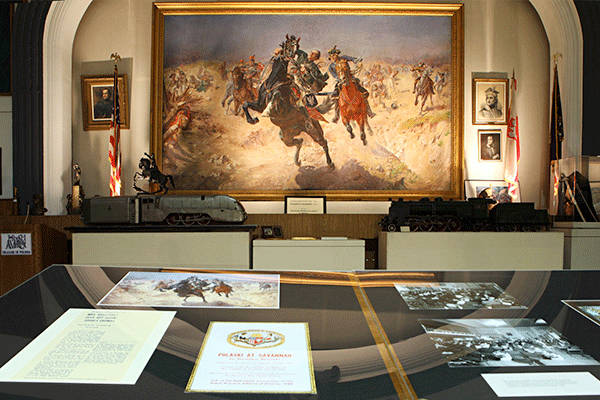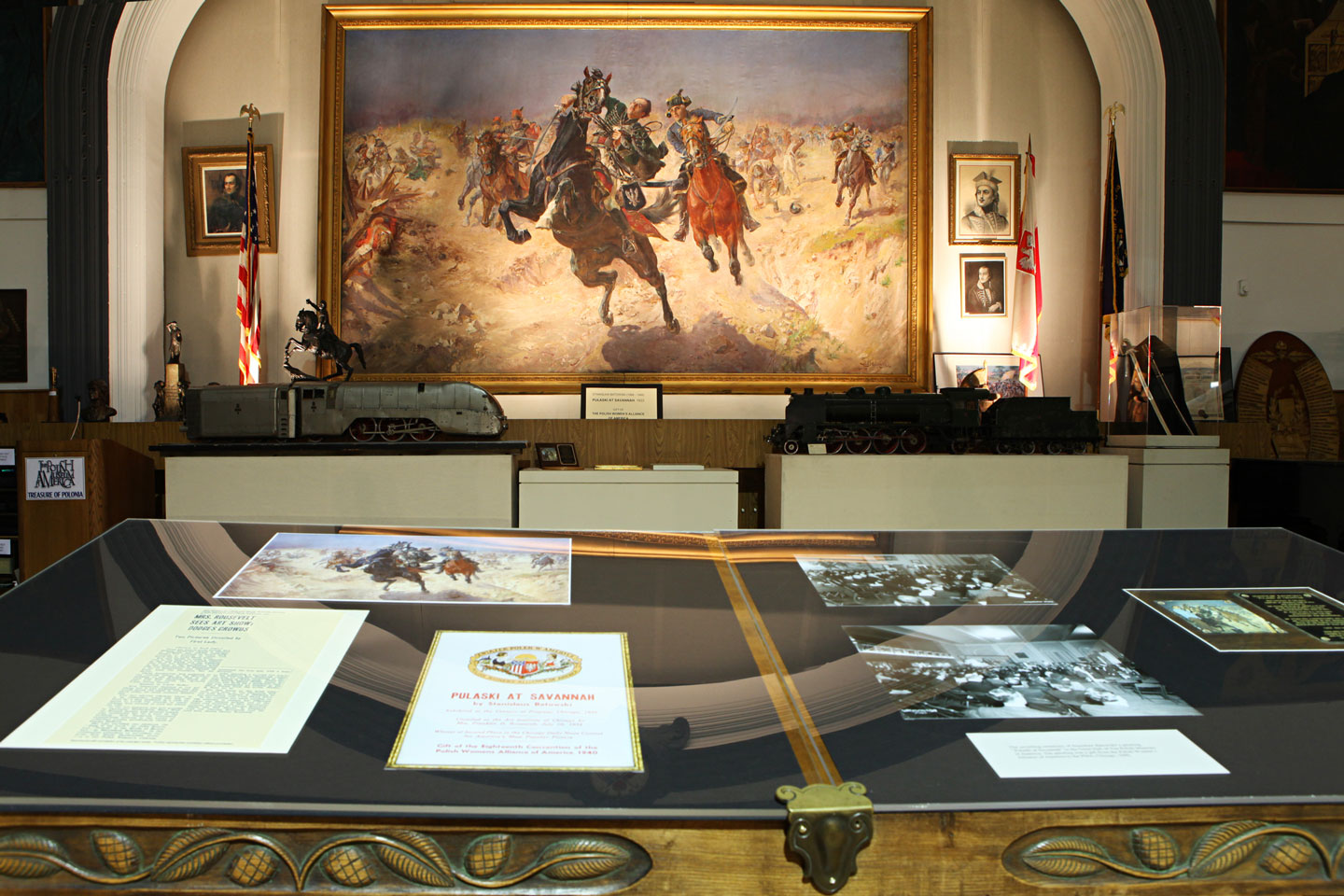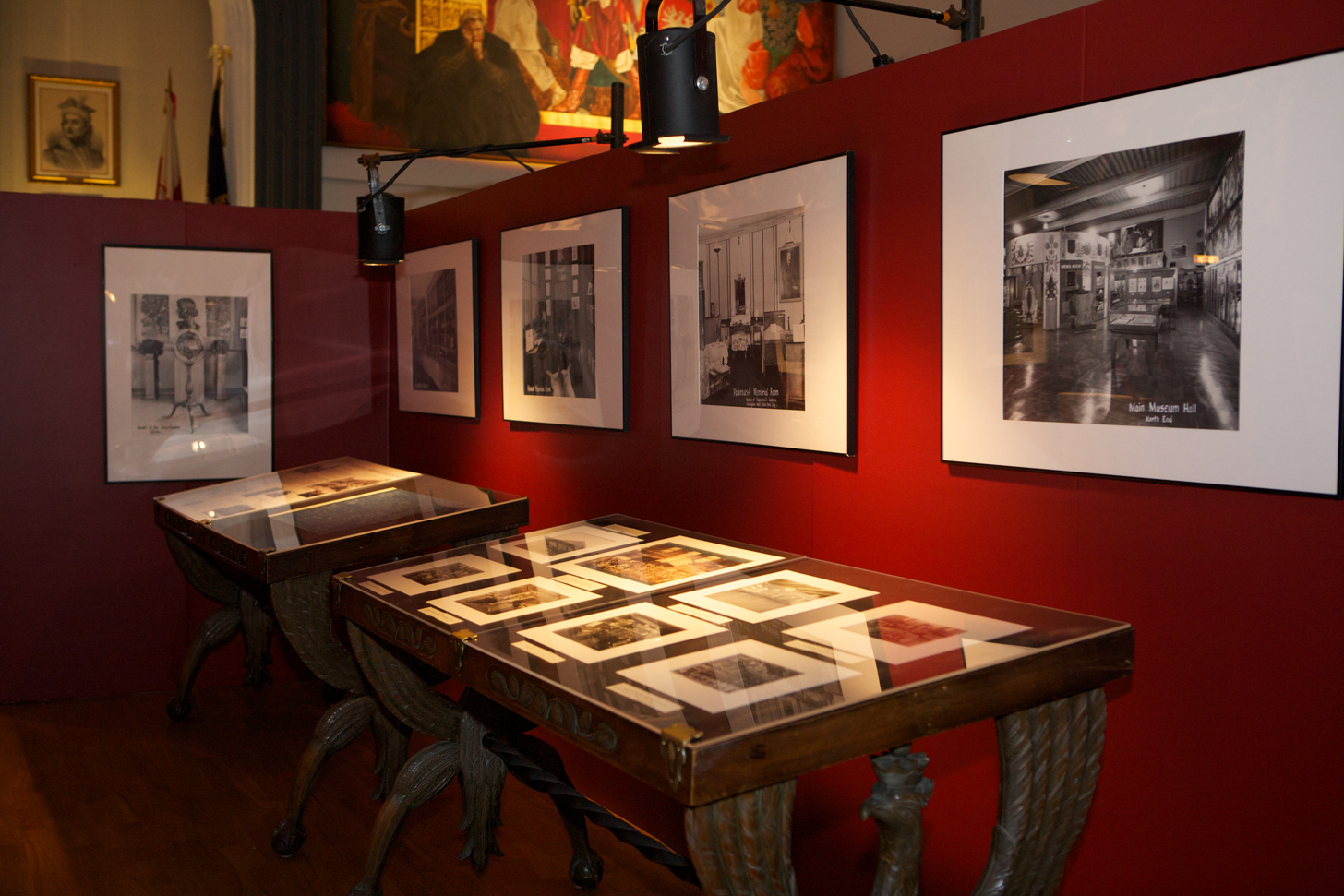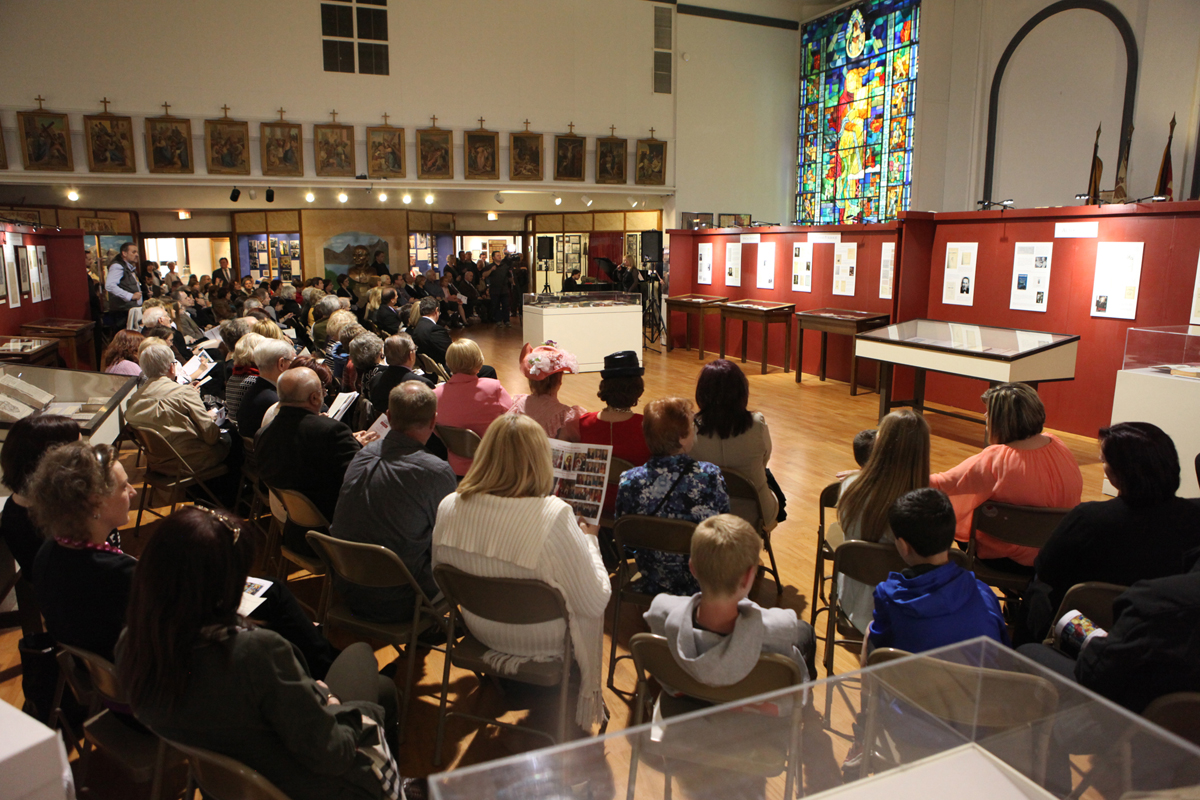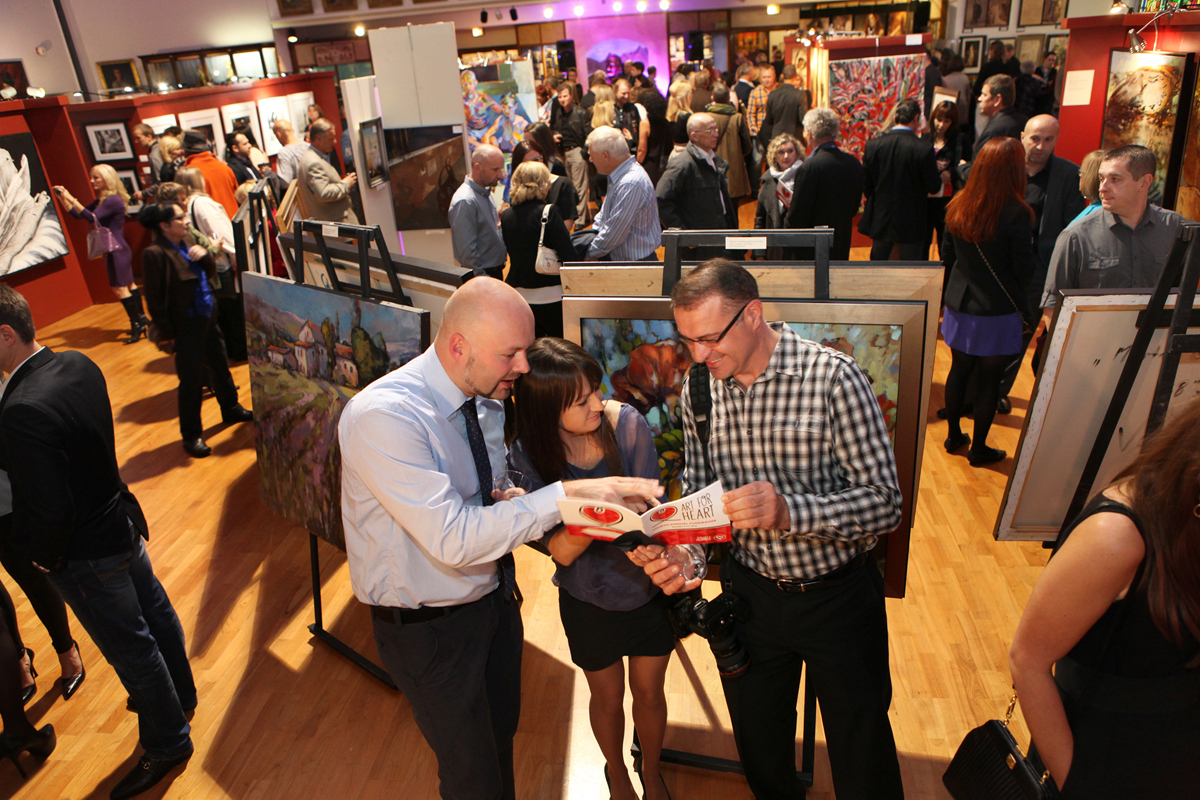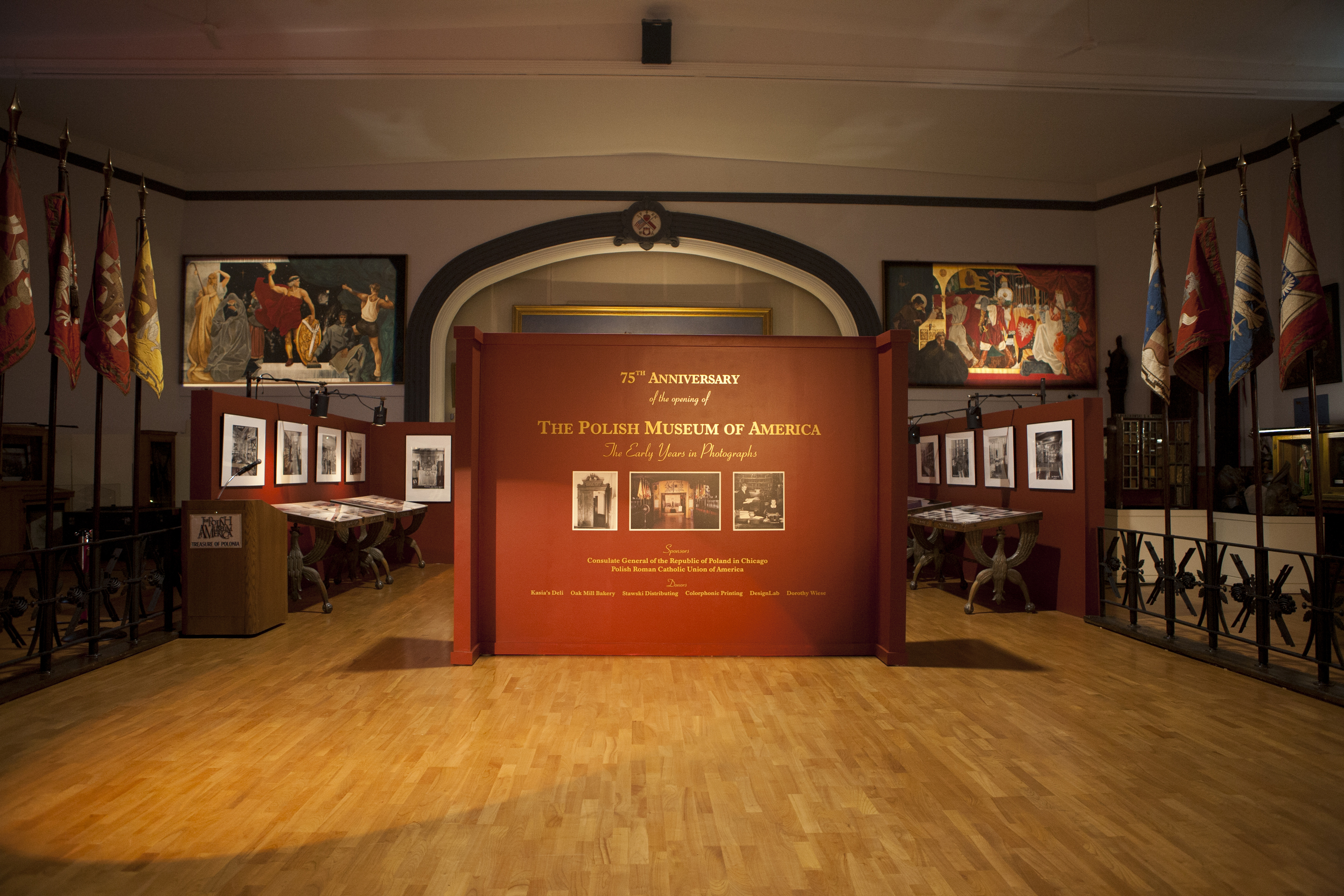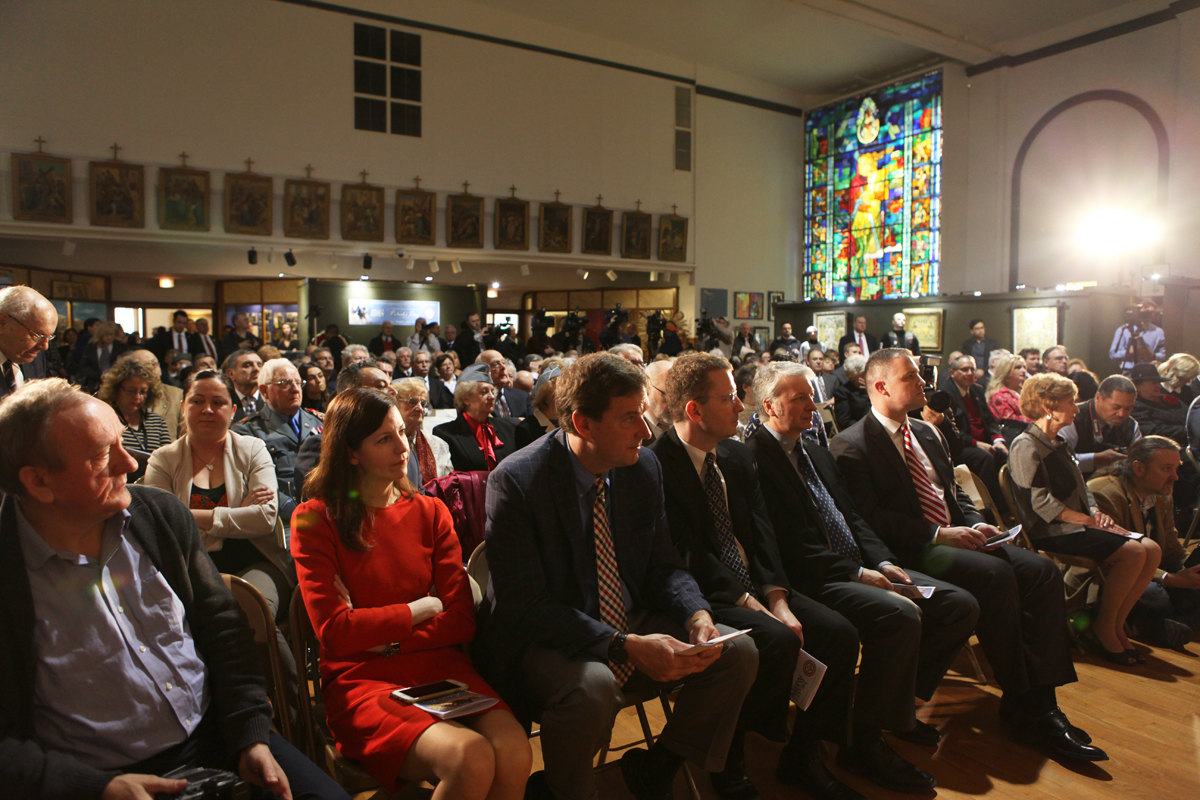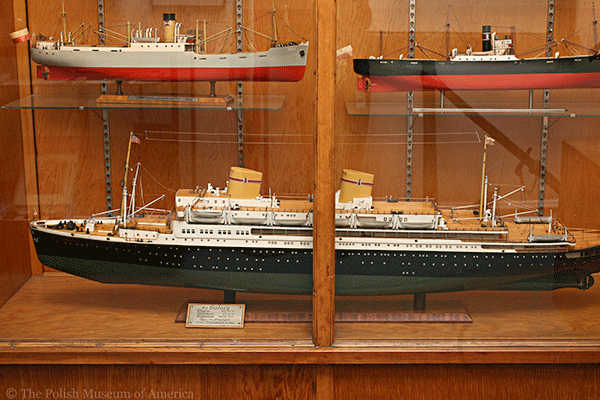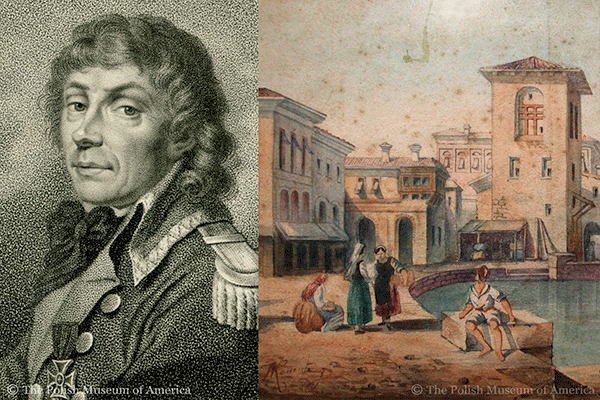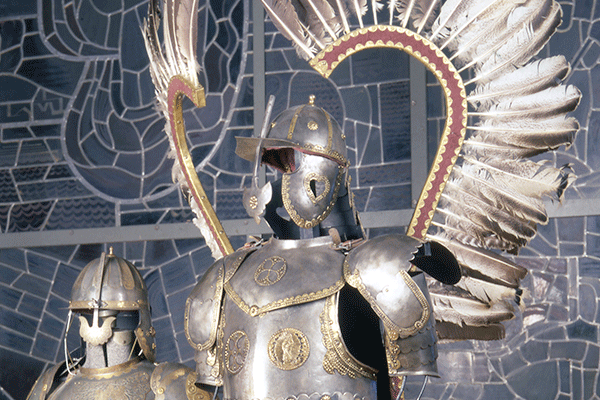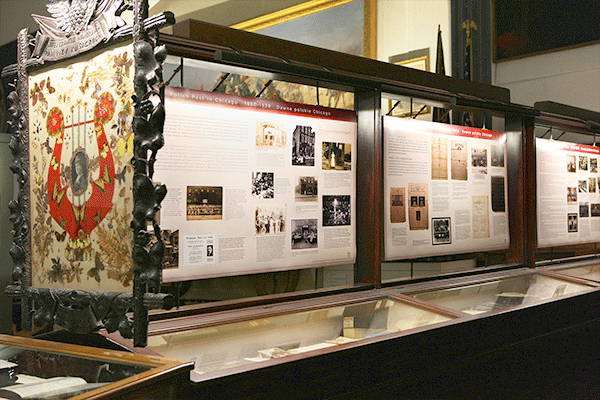The central element of the Great Hall (formerly the ballroom of the PRCUA) is the painting, Pulaski at Savannah (1933), by Stanislaw Kaczor Batowski (1866–1946). In 1933, this painting was displayed at Chicago’s World’s Fair, and later, in the Chicago Art Institute. In 1939, it was purchased by the Polish Women’s Alliance of America, then given to the Museum. On either side of the Batowski painting are two allegorical paintings by Jan Henryk Rosen (1891–1982). These monumental compositions of mixed techniques with gilt cloth, decorated the Art Room and the Science Room at the Polish Pavilion in New York.
One of the most important paintings by Wojciech Kossak (1856–1942) hangs on the west wall: Reminiscence of Childhood—Charge of the Circassians down Krakowskie Przedmieście (1891).
Dominating the Great Hall on the east side is a majestic stained glass window, from floor to ceiling, Symbol of Poland Reborn, designed by Mieczysław Jurgielewicz and manufactured in 1939 in the Krakow Factory of Stained Glass, Glazing, Mosaics, S. G. Żeleński.
In this room is a horse-drawn sleigh of wood from 1703—a gift from the Chicago Foundation of John D. and Catherine T. MacArthur. It is carved out of a single piece of wood in the shape of a powerful fish with open jaws. The sleigh was a Christmas present from King Stanisław Leszczyński for his daughter, Princess Maria, who became the wife of Louis XV, King of France.

